Project Card

Unicellular Genome Stability Study
PROJECT CARD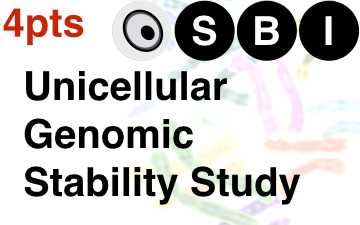
Sorry, there is no photo available. If you have one, please submit
here
.
Task: Study the genes responsible for the maintenance of chromosome structure and genome stability.
Graphic by Wikipediaen.wikipedia.org/wiki/File:Spectralkaryotype98-300.jpg
Some organisms have multiple copies of chromosomes: diploid, triploid, tetraploid and so on. In classical genetics, in a sexually reproducing organism (typically eukarya) the gamete has half the number of chromosomes of the somatic cell and the genome is a full set of chromosomes in a diploid cell. The halving of the genetic material in […] read more

Invertebrate Hybrid study
PROJECT CARD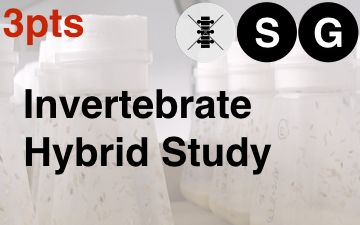
Sorry, there is no photo available. If you have one, please submit
here
.
Task: Study the genetics of reproductive isolation by mating two different genetic lines to produce hybrid organisms.
Graphic by Wikipediacommons.wikipedia.org/wiki/File:Drosophila_in_the_lab.jpg
In biology a hybrid, also known as cross breed, is the result of mixing, through sexual reproduction, two animals or plants of different breeds, varieties, species or genera.[1] Using genetic terminology, it may be defined as follows.[2] Hybrid generally refers to any offspring resulting from the breeding of two genetically distinct individuals, which usually will […] read more

Vertebrate CRISPR/Cas Genome Editing
PROJECT CARD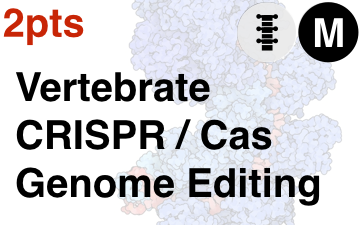
Sorry, there is no photo available. If you have one, please submit
here
.
Task : Use modified bacterial DNA segments (CRISPRs) to silence, enhance, or otherwise alter the genes of a vertebrate organism.
Graphic by Wikipediacommons.wikimedia.org/wiki/File:181-CasseroleAndCRISPR_1vy8.tiff
Clustered regularly interspaced short palindromic repeats(CRISPR, pronounced crisper[2]) are segments of prokaryoticDNA containing short repetitions of base sequences. Each repetition is followed by short segments of “spacer DNA” from previous exposures to a bacteriophage virus or plasmid.[3] The CRISPR/Cas system is a prokaryotic immune system that confers resistance to foreign genetic elements such as those […] read more

Software Development
PROJECT CARD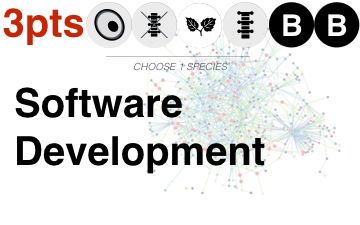
Sorry, there is no photo available. If you have one, please submit
here
.
Task: Design a computer program for analyzing genetic data.
Software development is the process of computer programming, documenting, testing, and bug fixing involved in creating and maintaining applications and frameworks involved in a software release life cycle and resulting in a software product. The term refers to a process of writing andmaintaining the source code, but in a broader sense of the term it […] read more

Whole Genome Sequencing
PROJECT CARD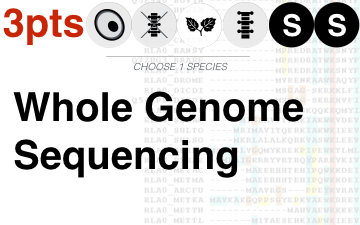
Sorry, there is no photo available. If you have one, please submit
here
.
Task : Sequence the entire genome of an organism of your choosing.
Graphic by Miguel Andradecommons.wikimedia.org/wiki/File:RPLP0_90_ClustalW_aln.gif
Whole genome sequencing (also known as WGS, full genome sequencing, complete genome sequencing, or entire genome sequencing) is a laboratory process that determines the complete DNAsequence of an organism’s genome at a single time. This entails sequencing all of an organism’s chromosomal DNA as well as DNA contained in the mitochondria and, for plants, in […] read more

Invertebrate Cytogenetic Analysis
PROJECT CARD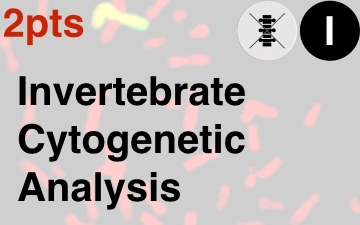
Sorry, there is no photo available. If you have one, please submit
here
.
Task: Investigate chromosome arrangements, forms, and behaviors in an invertebrate model organism.
Graphic by Stefan Mullercommons.wikimedia.org/wiki/File:Chr2_orang_human.jpg
Cytogenetics is a branch of genetics that is concerned with the study of the structure and function of the cell, especially the chromosomes.[1] It includes routine analysis of G-banded chromosomes, other cytogenetic banding techniques, as well as molecular cytogenetics such as fluorescent in situhybridization (FISH) and comparative genomic hybridization (CGH). (From: Wikipedia, June 2016) read more